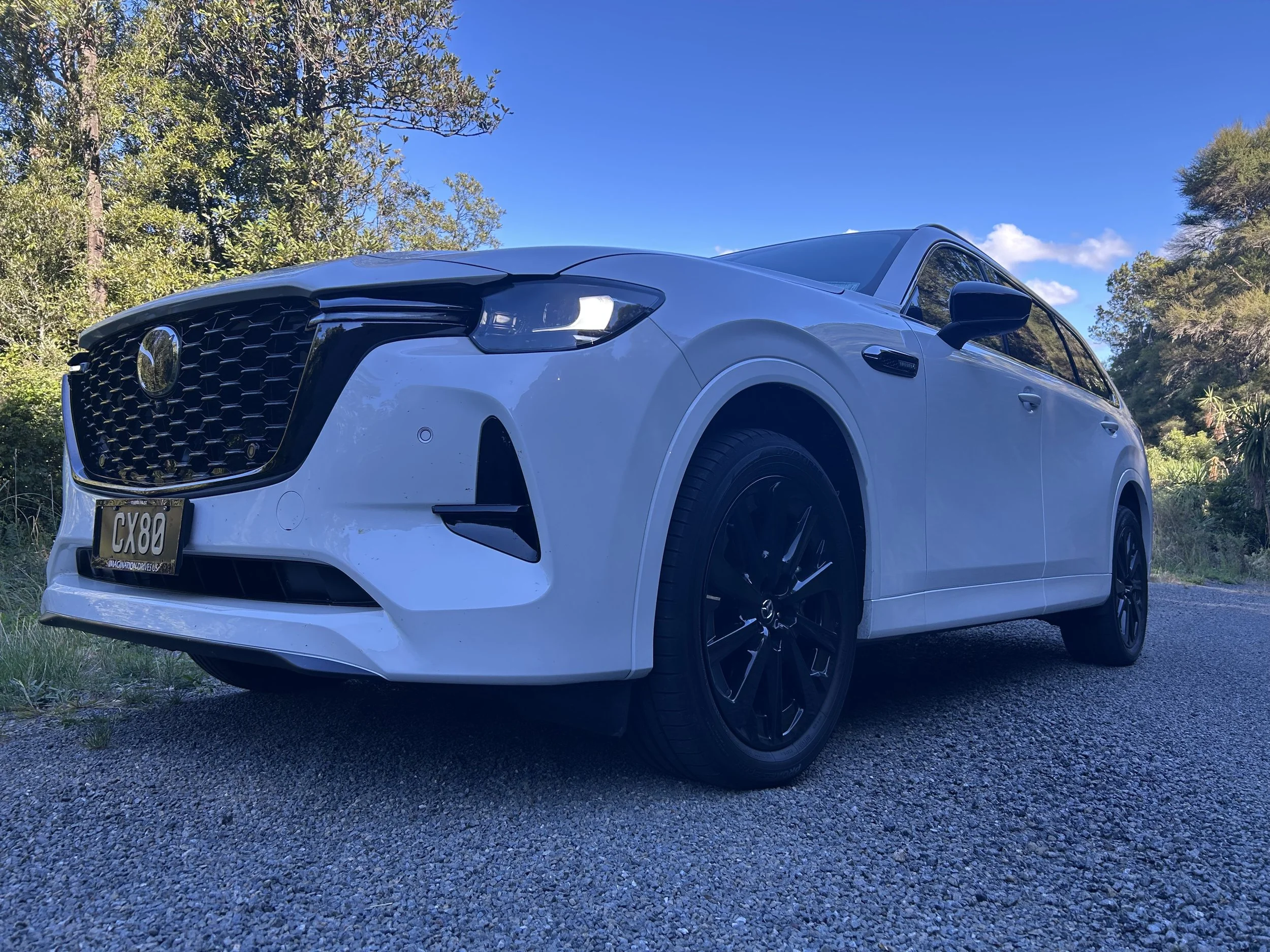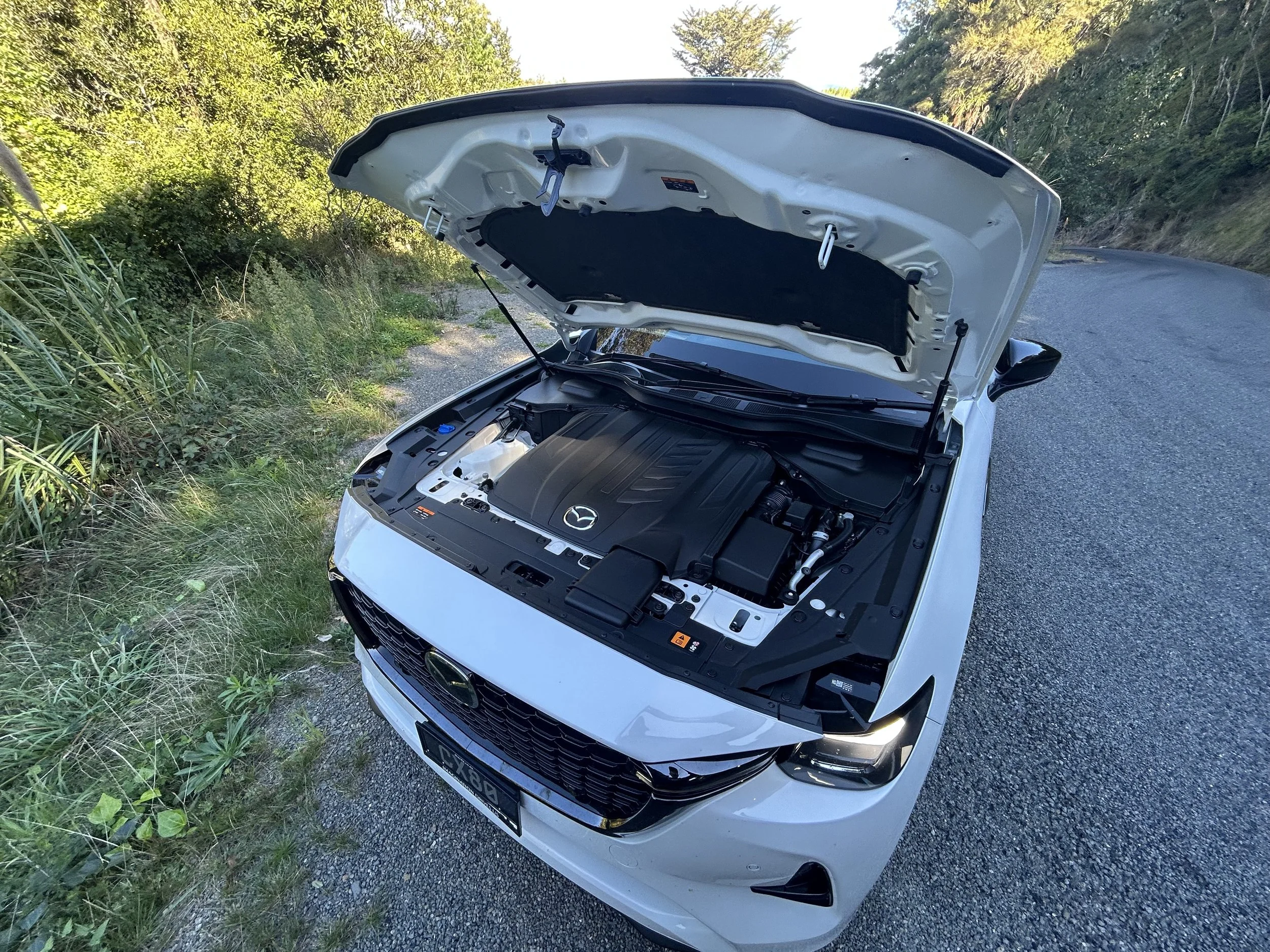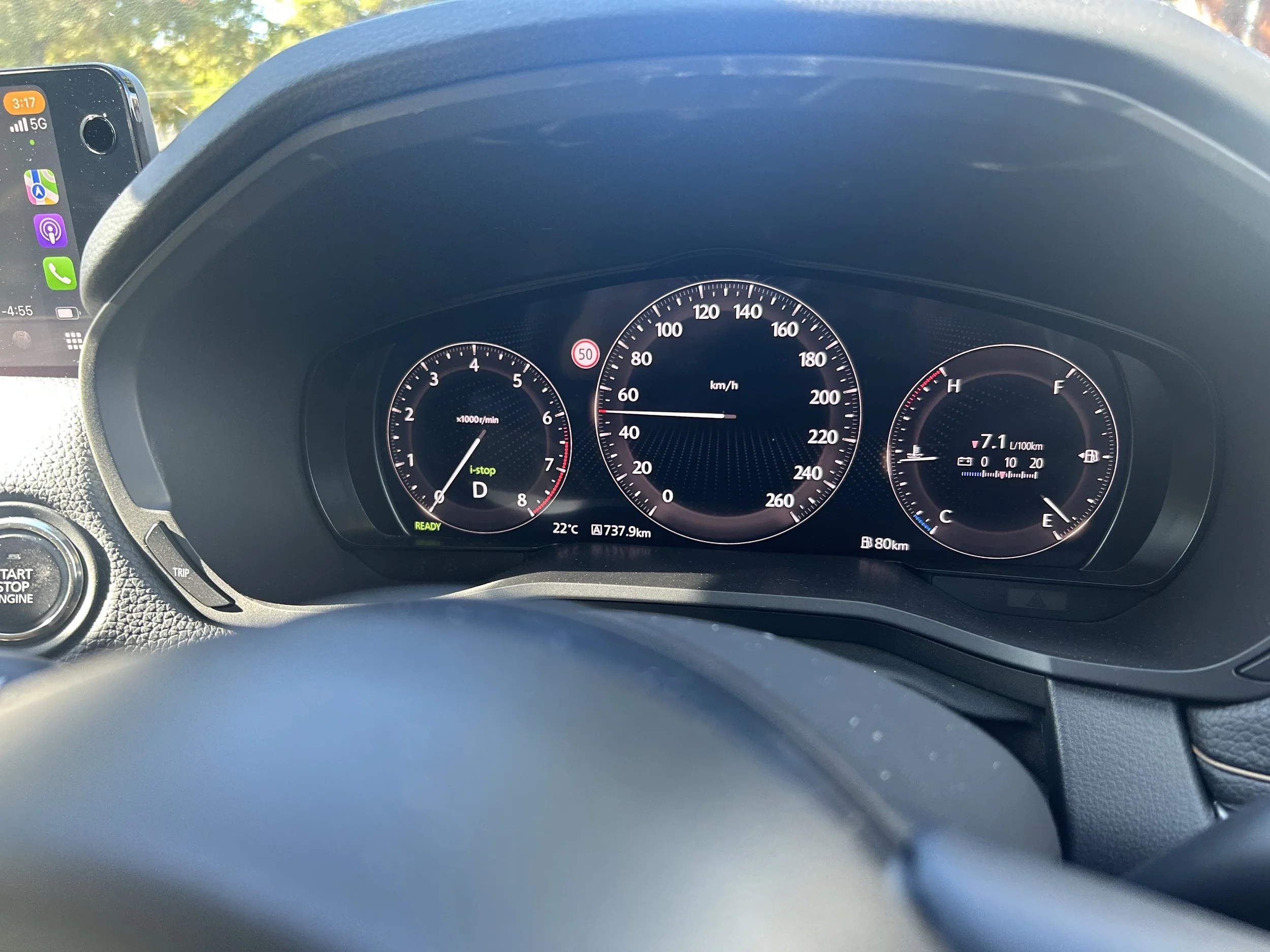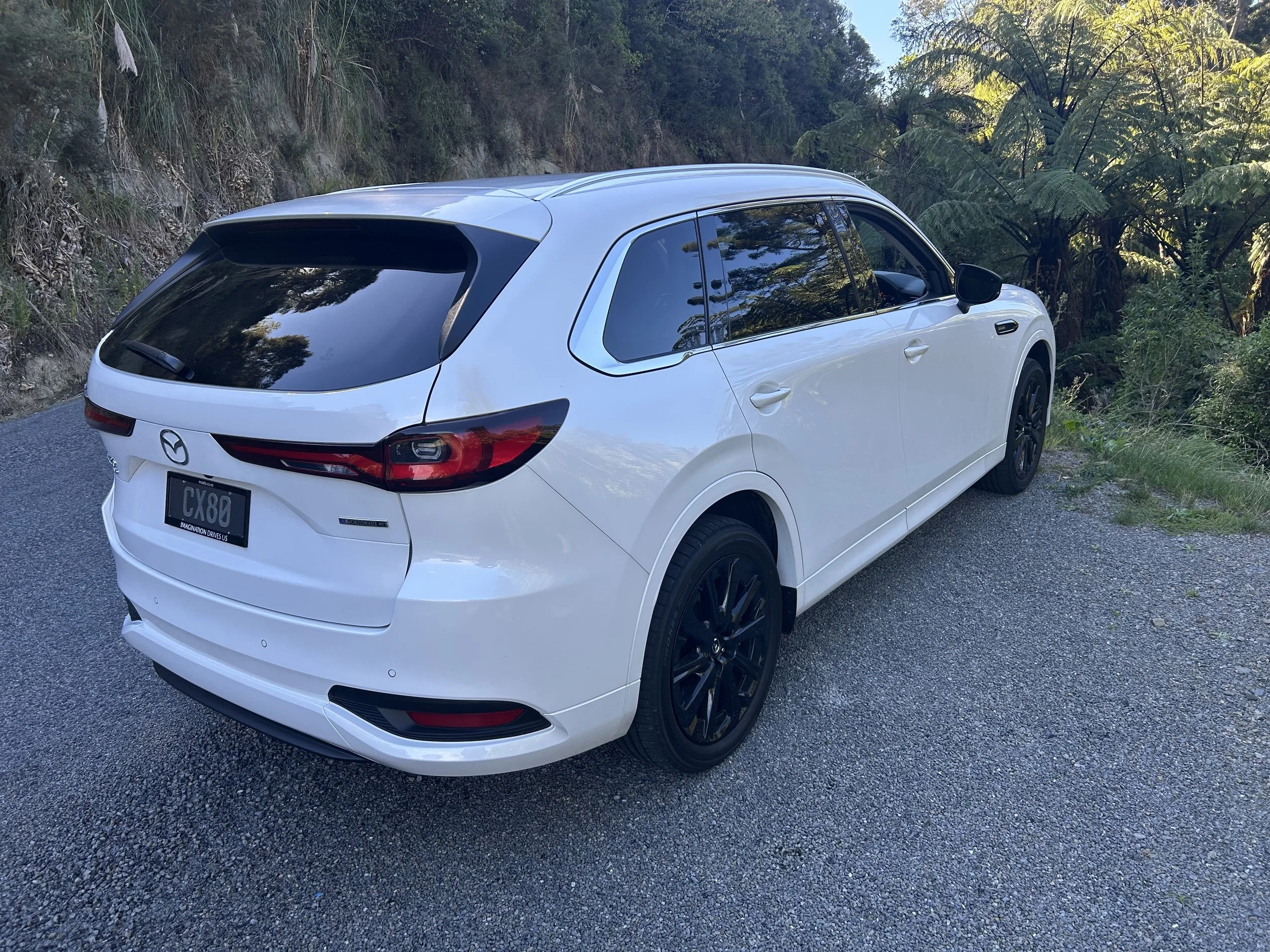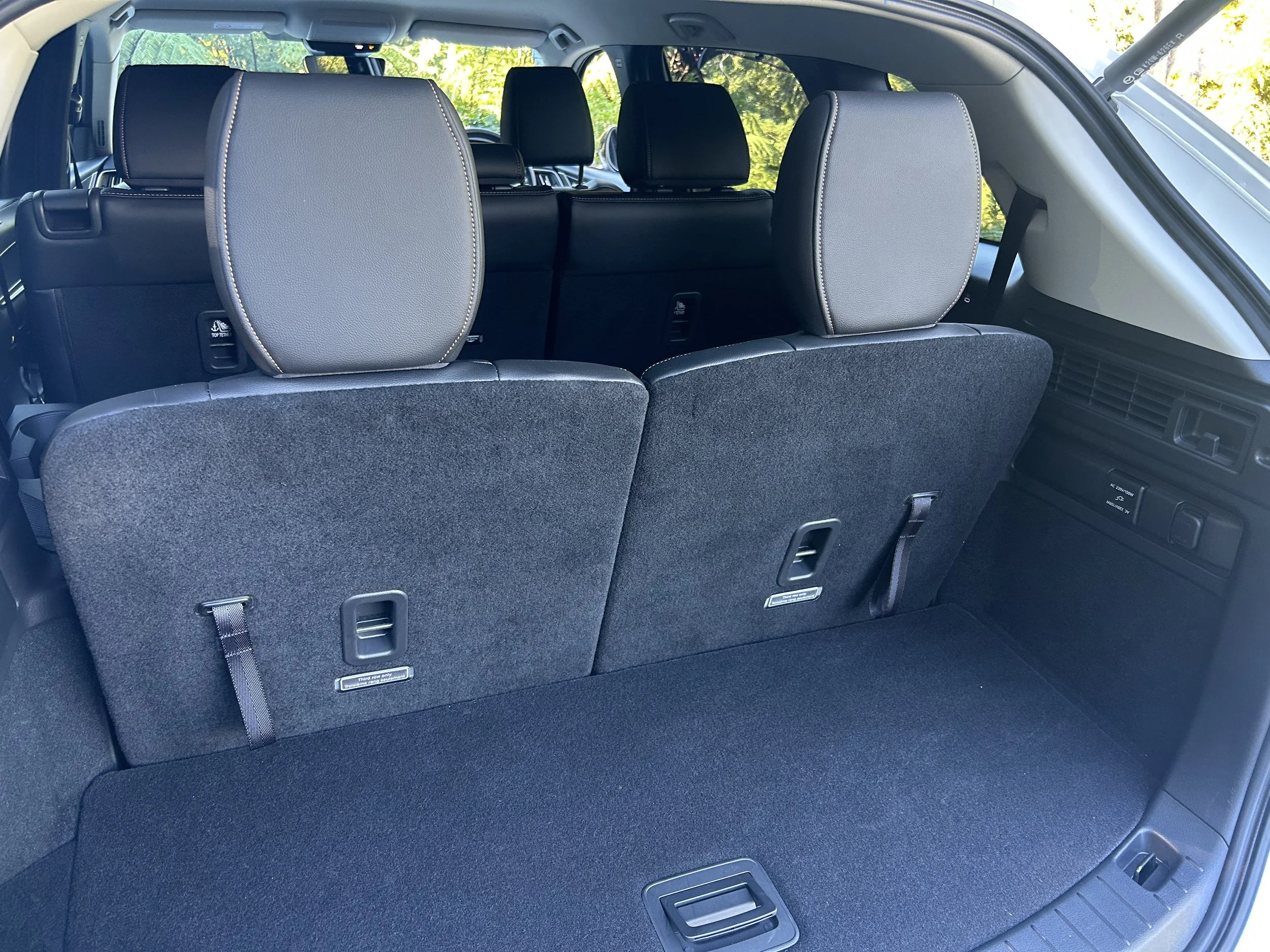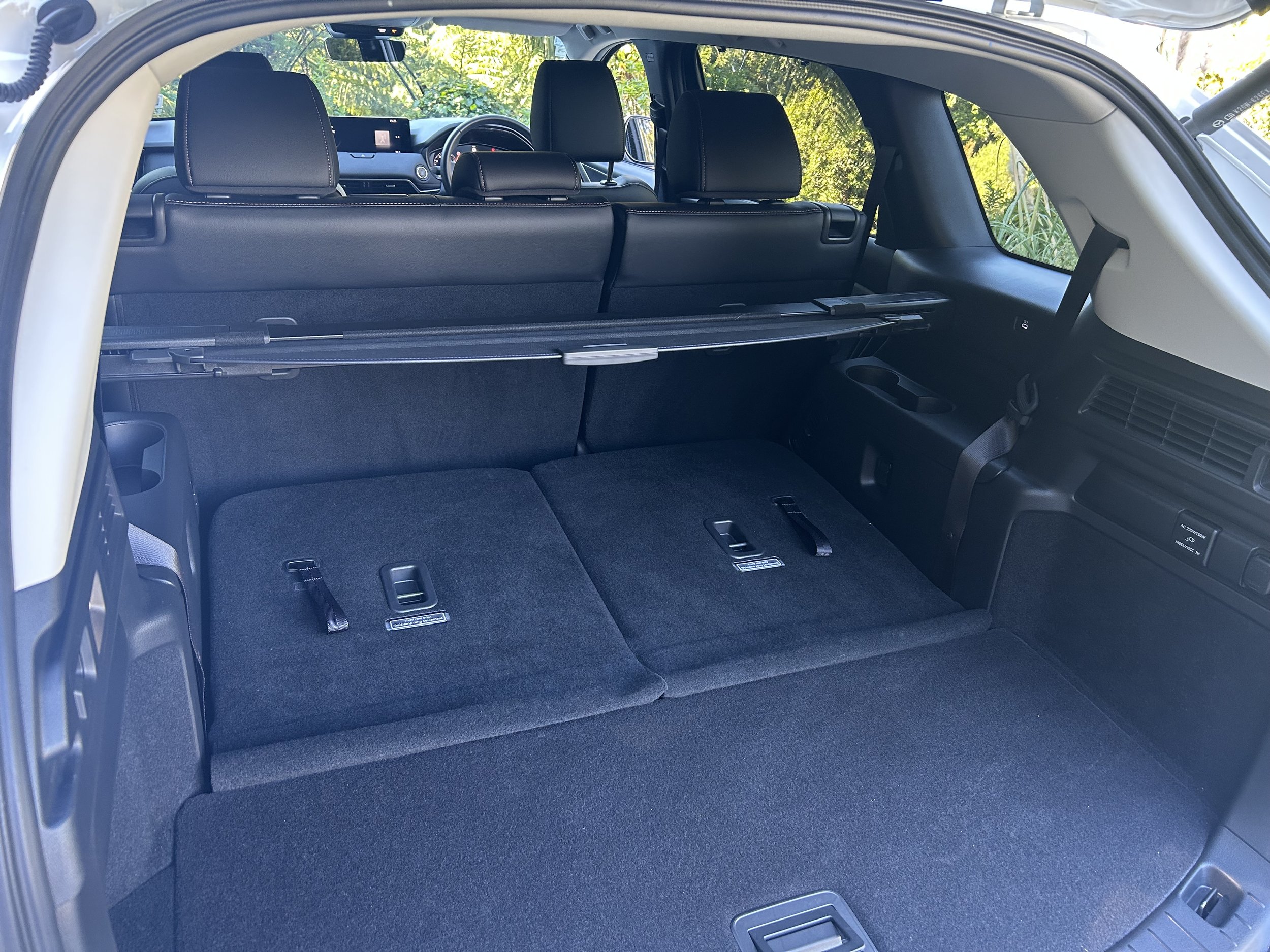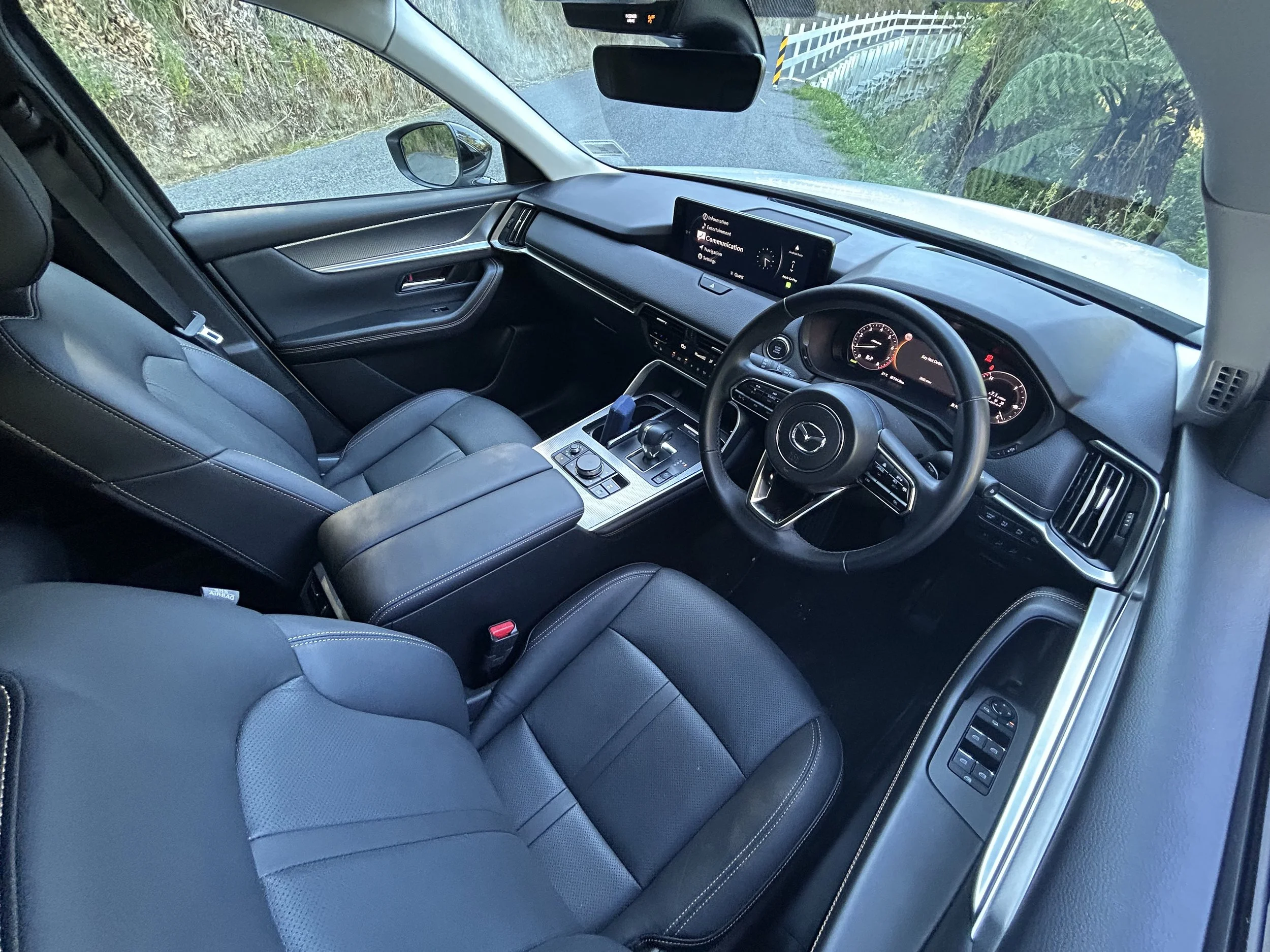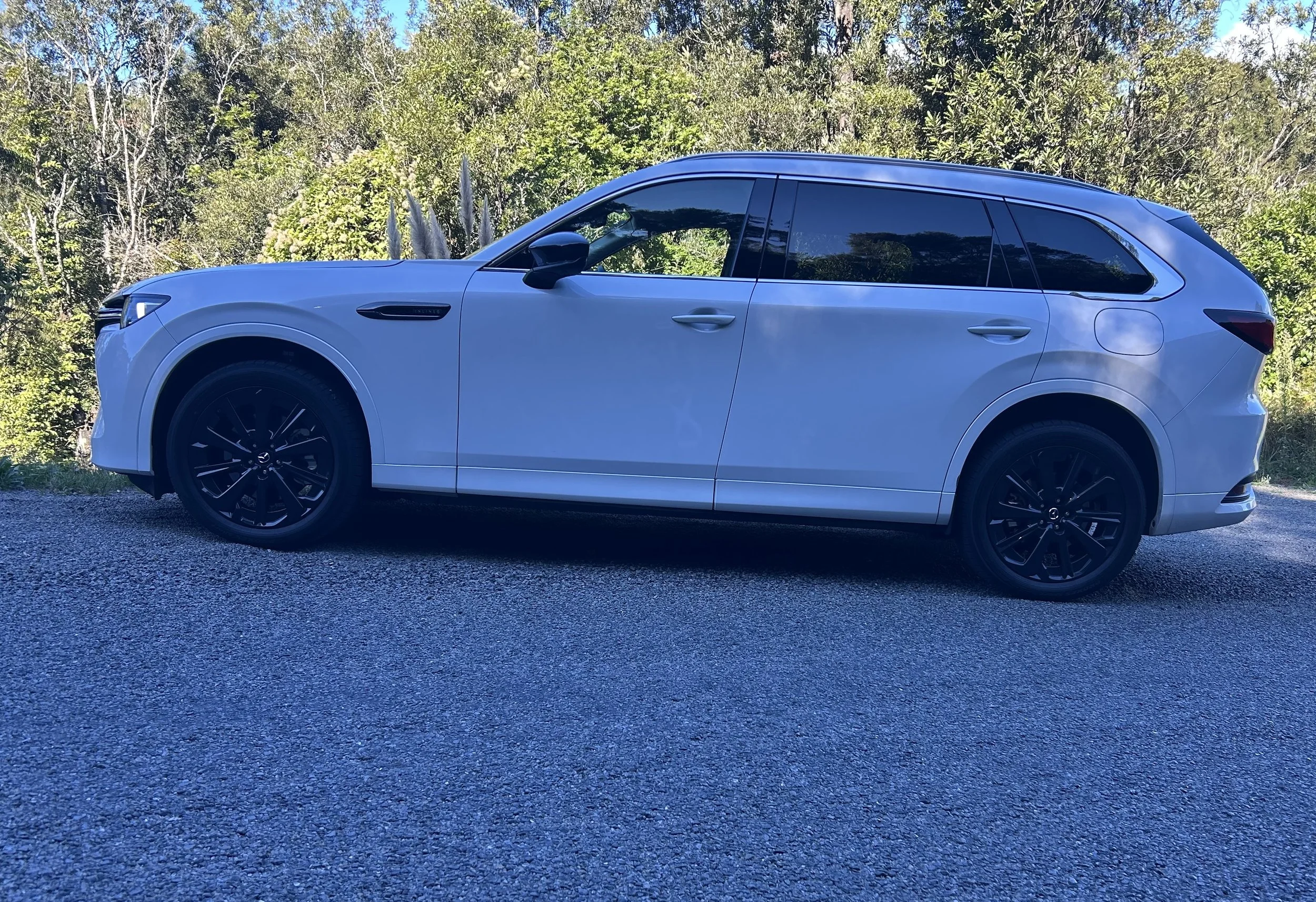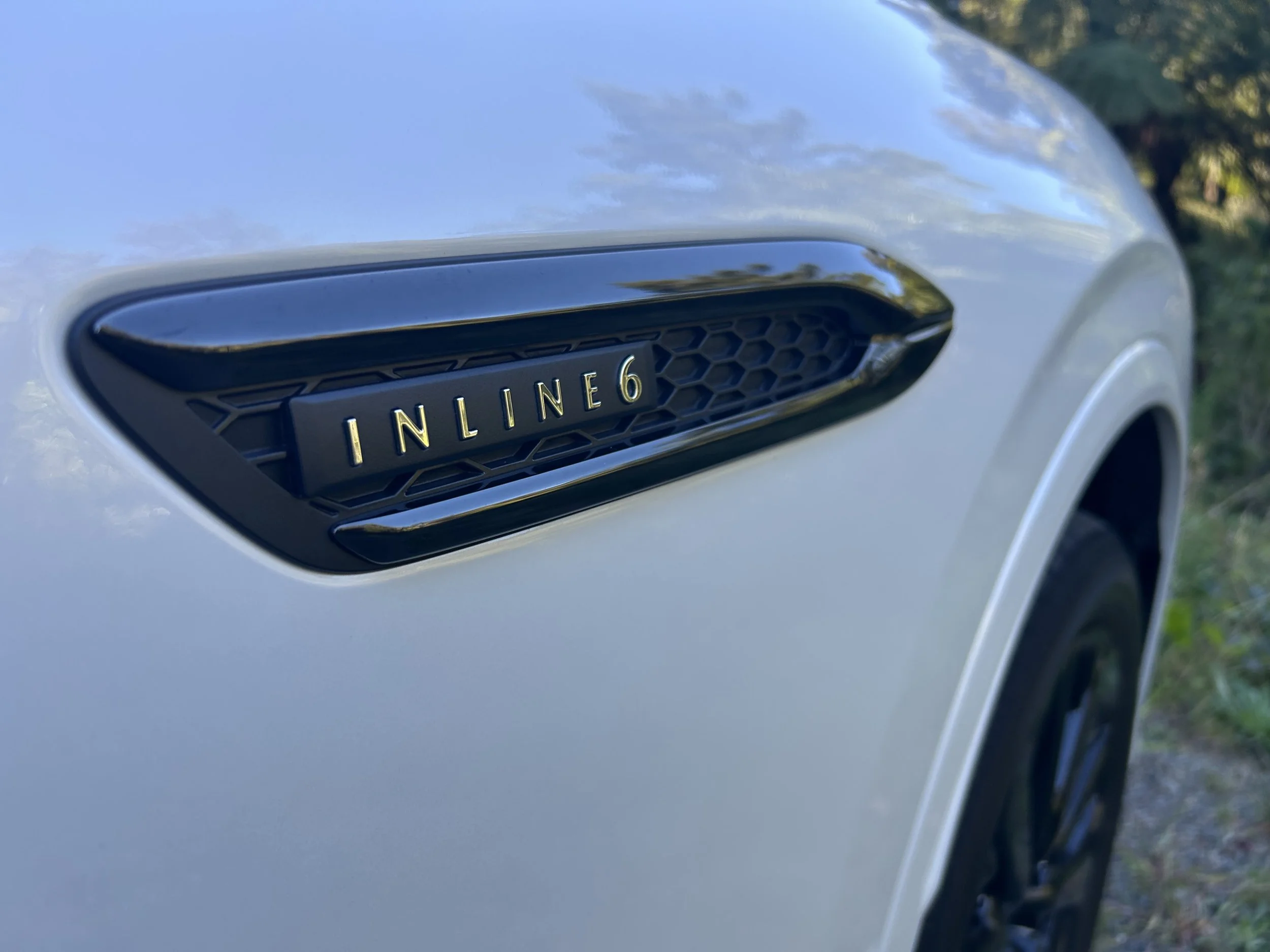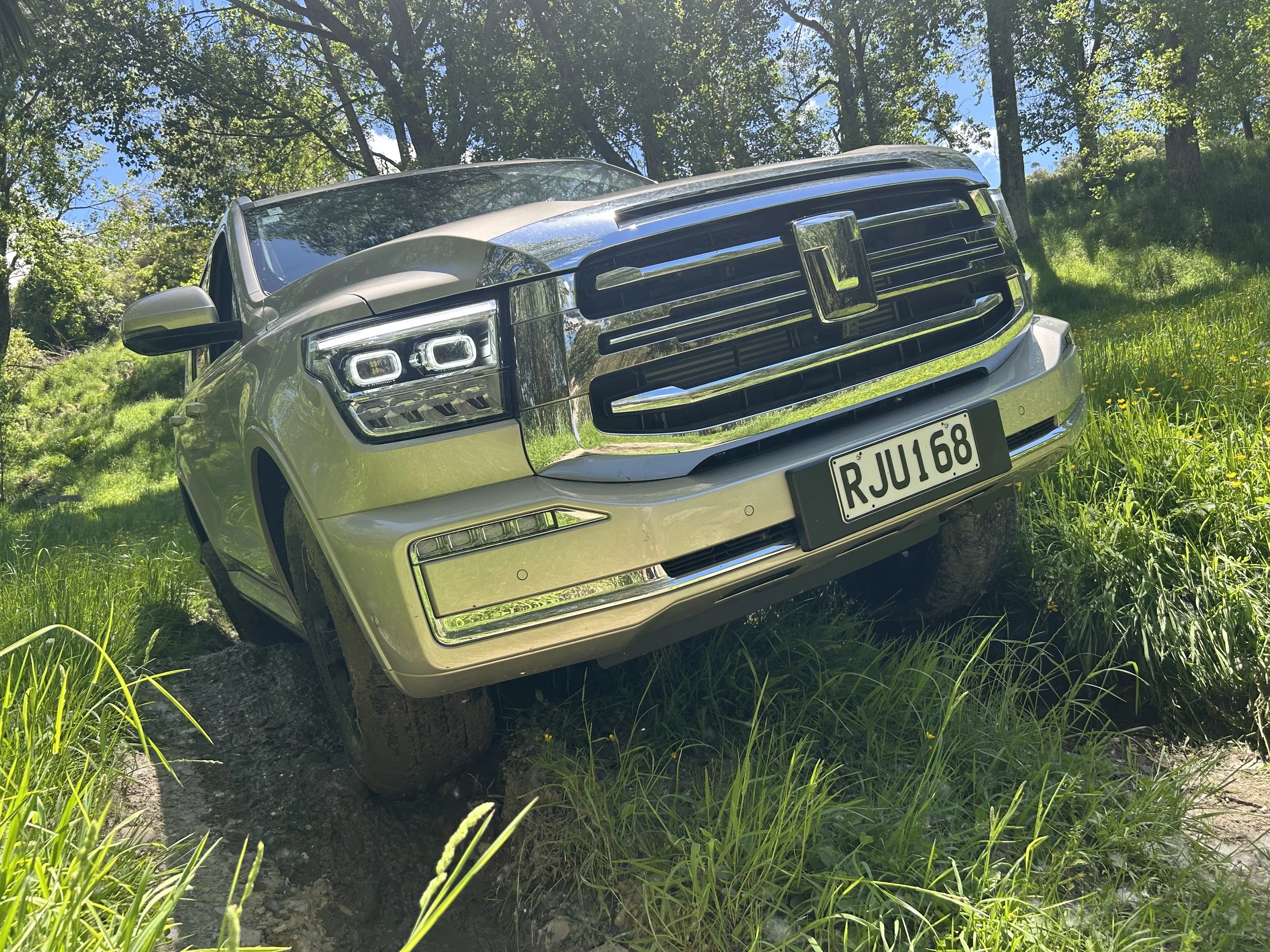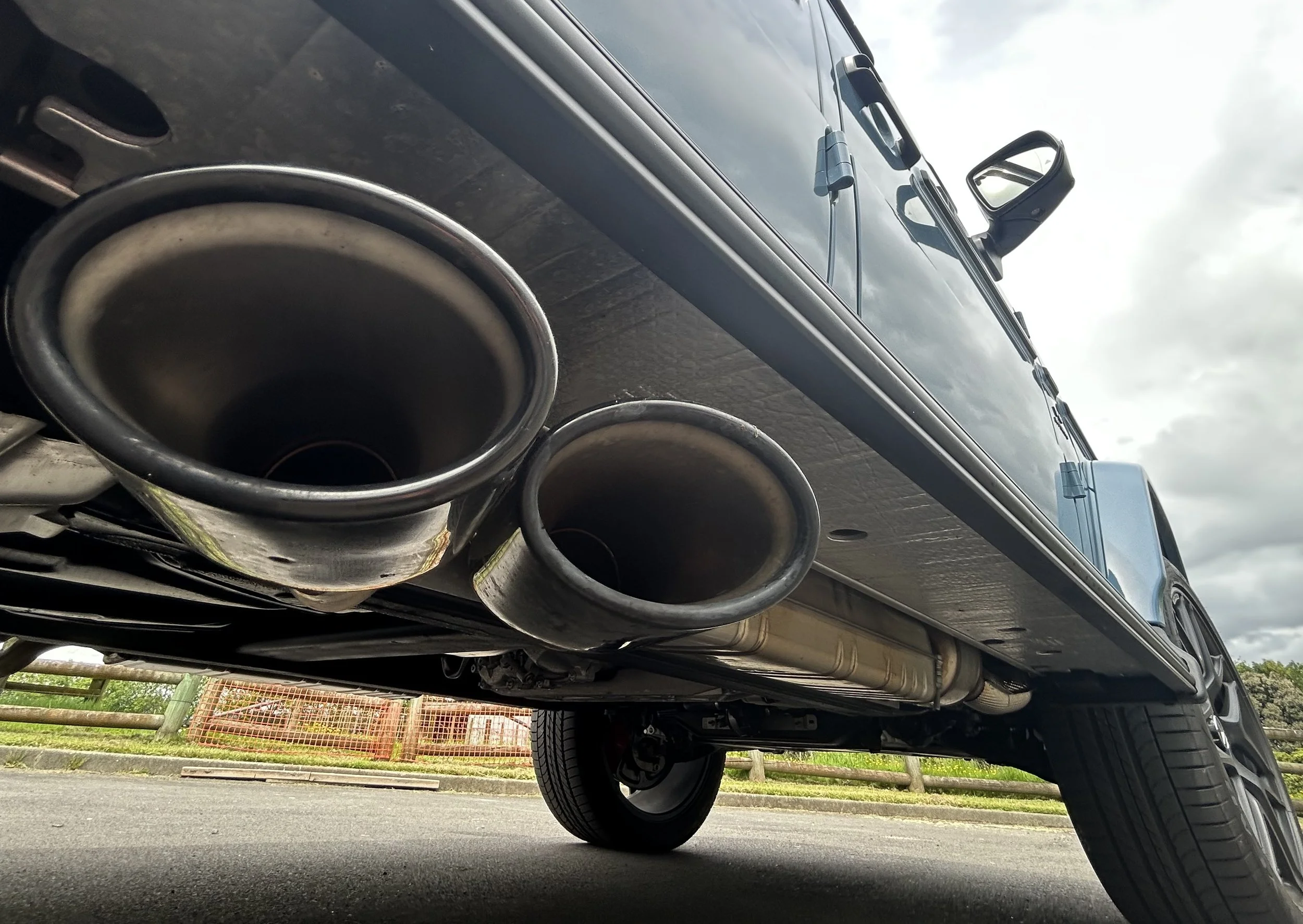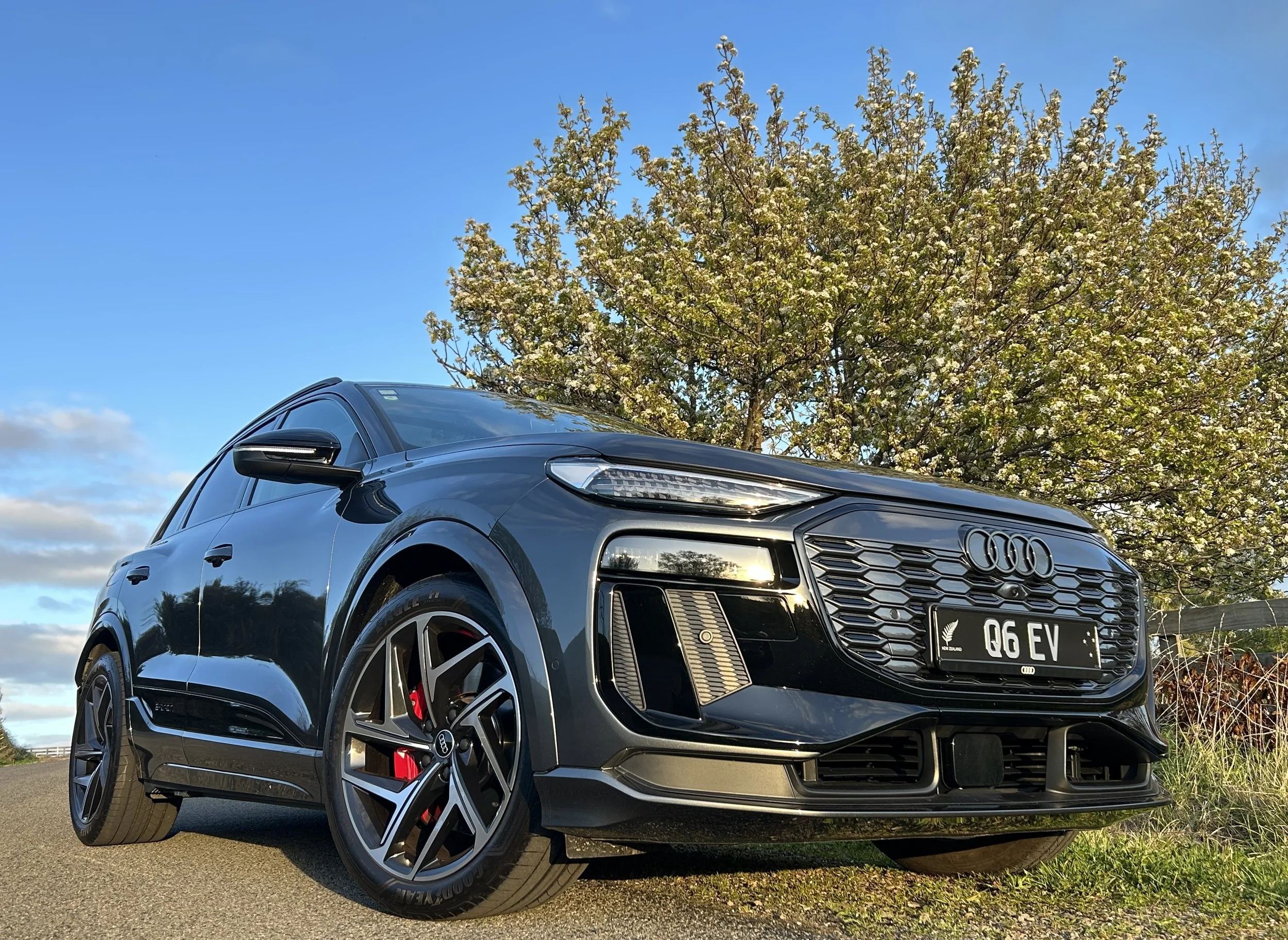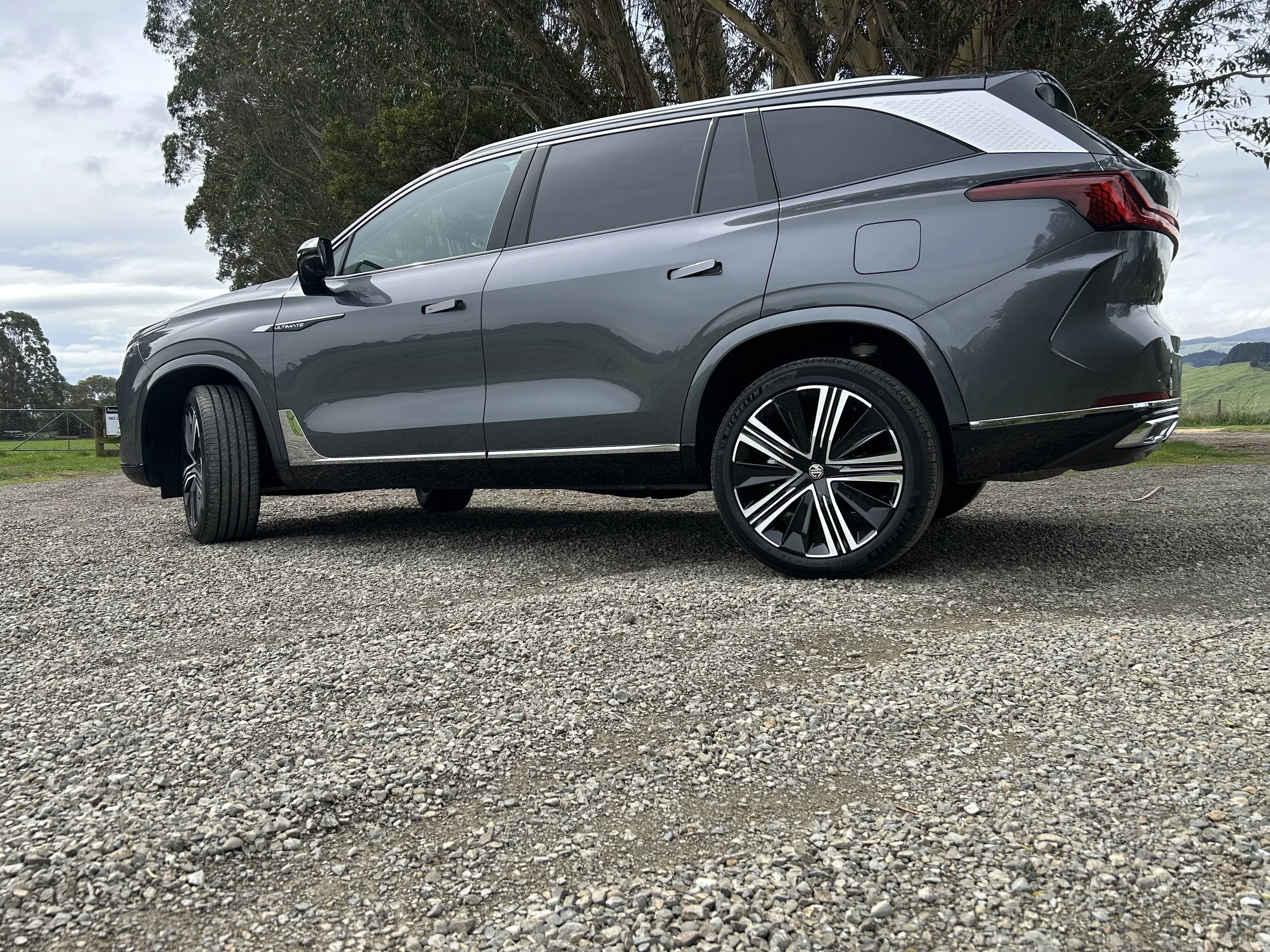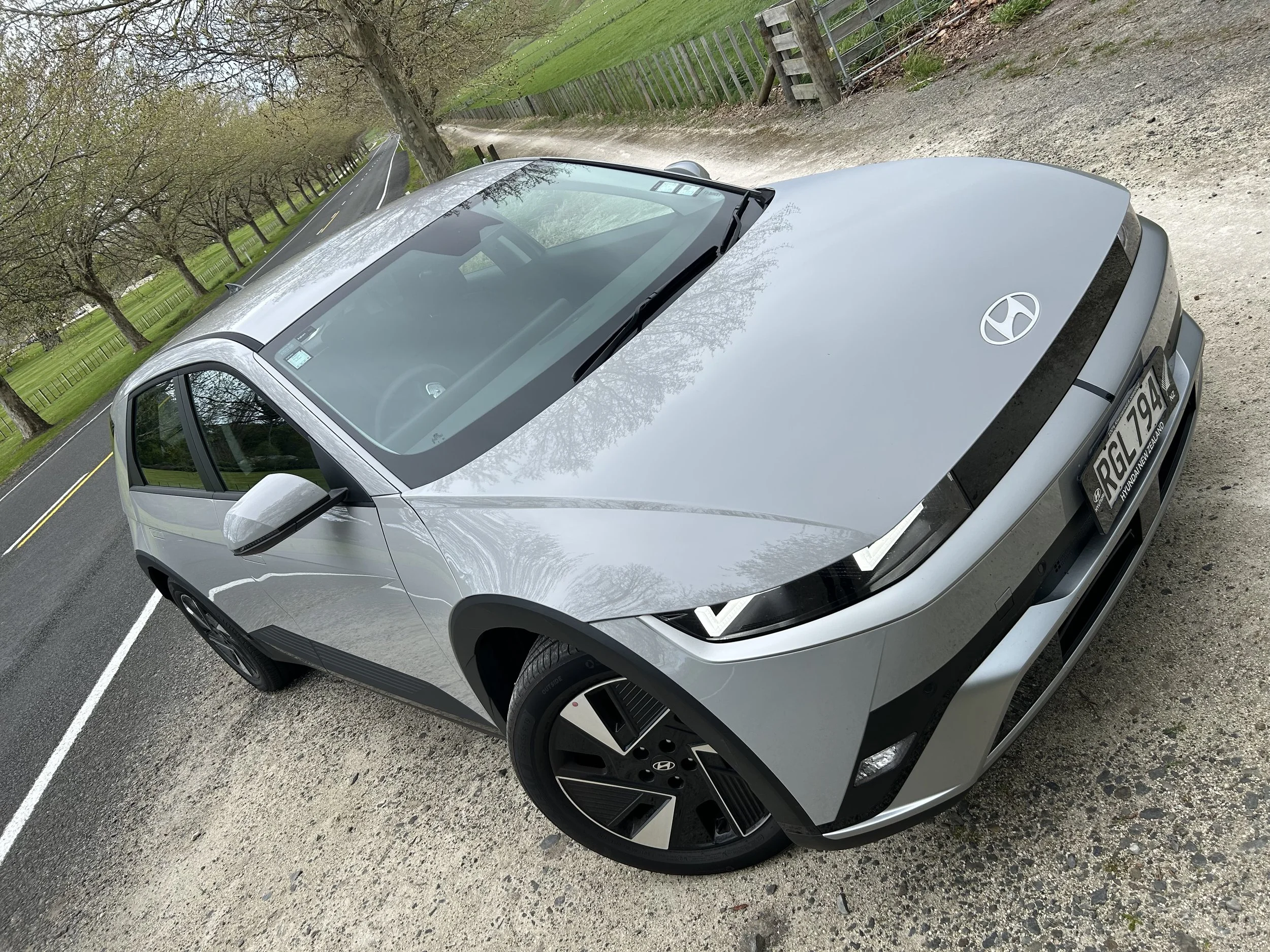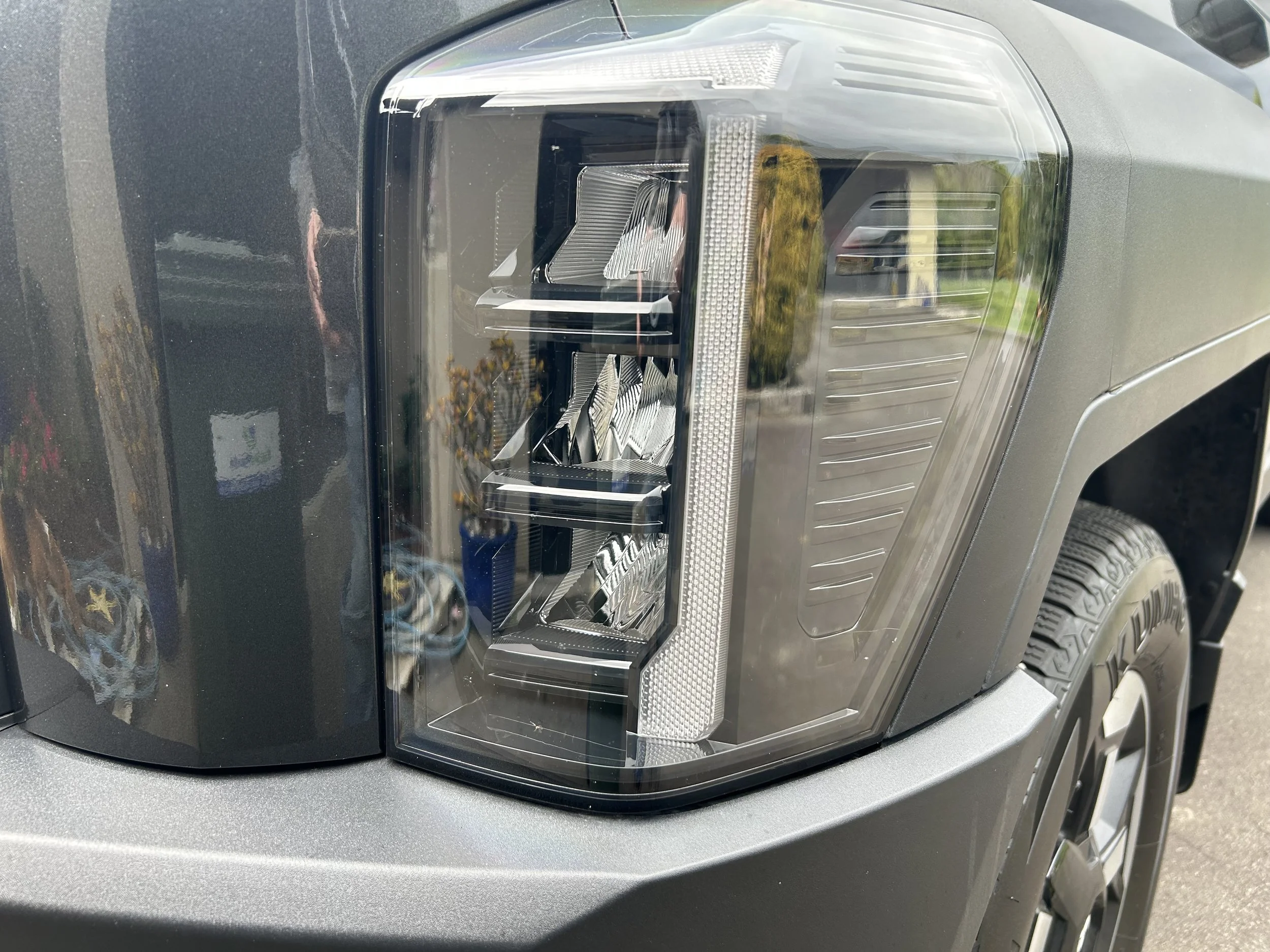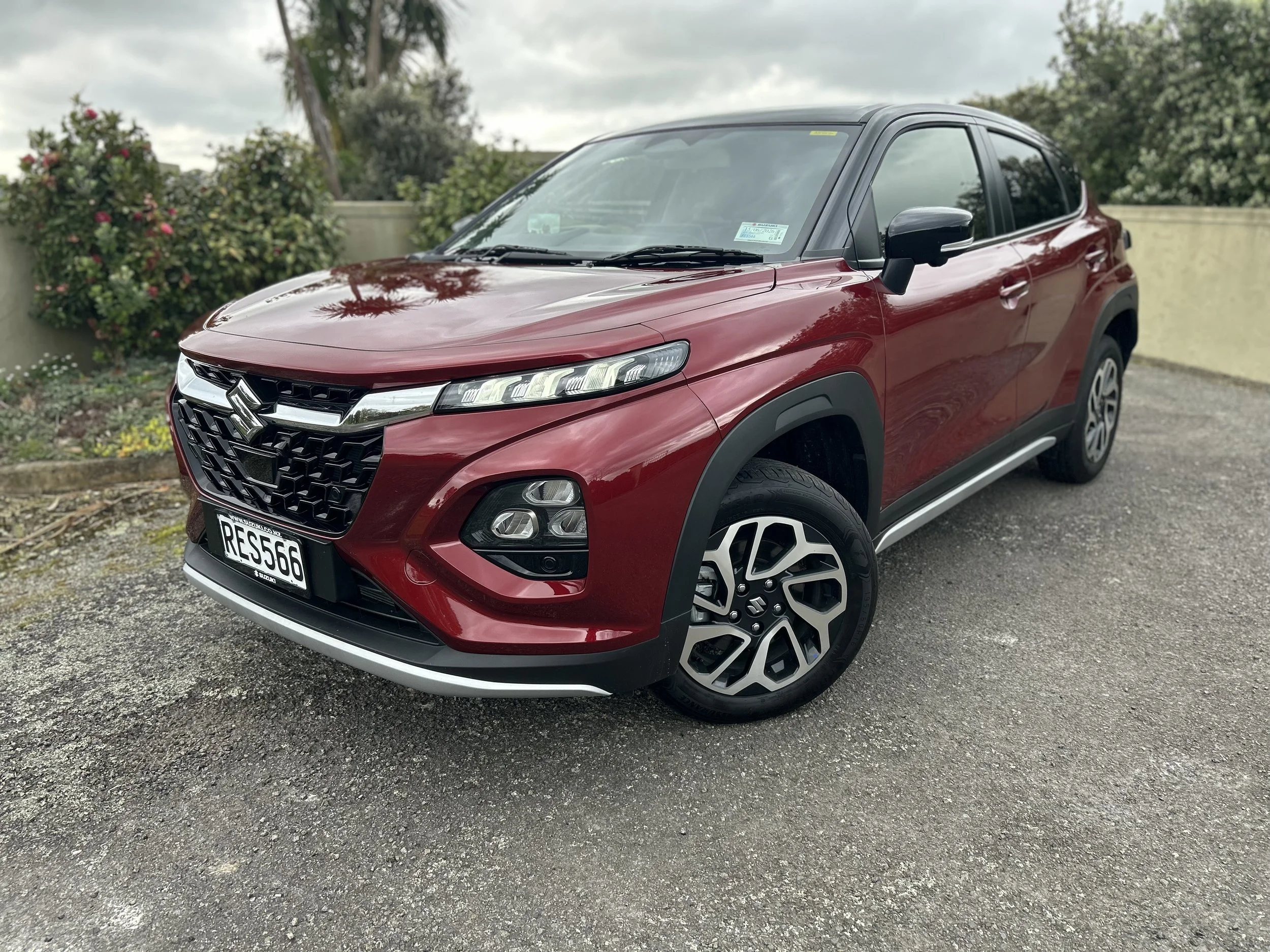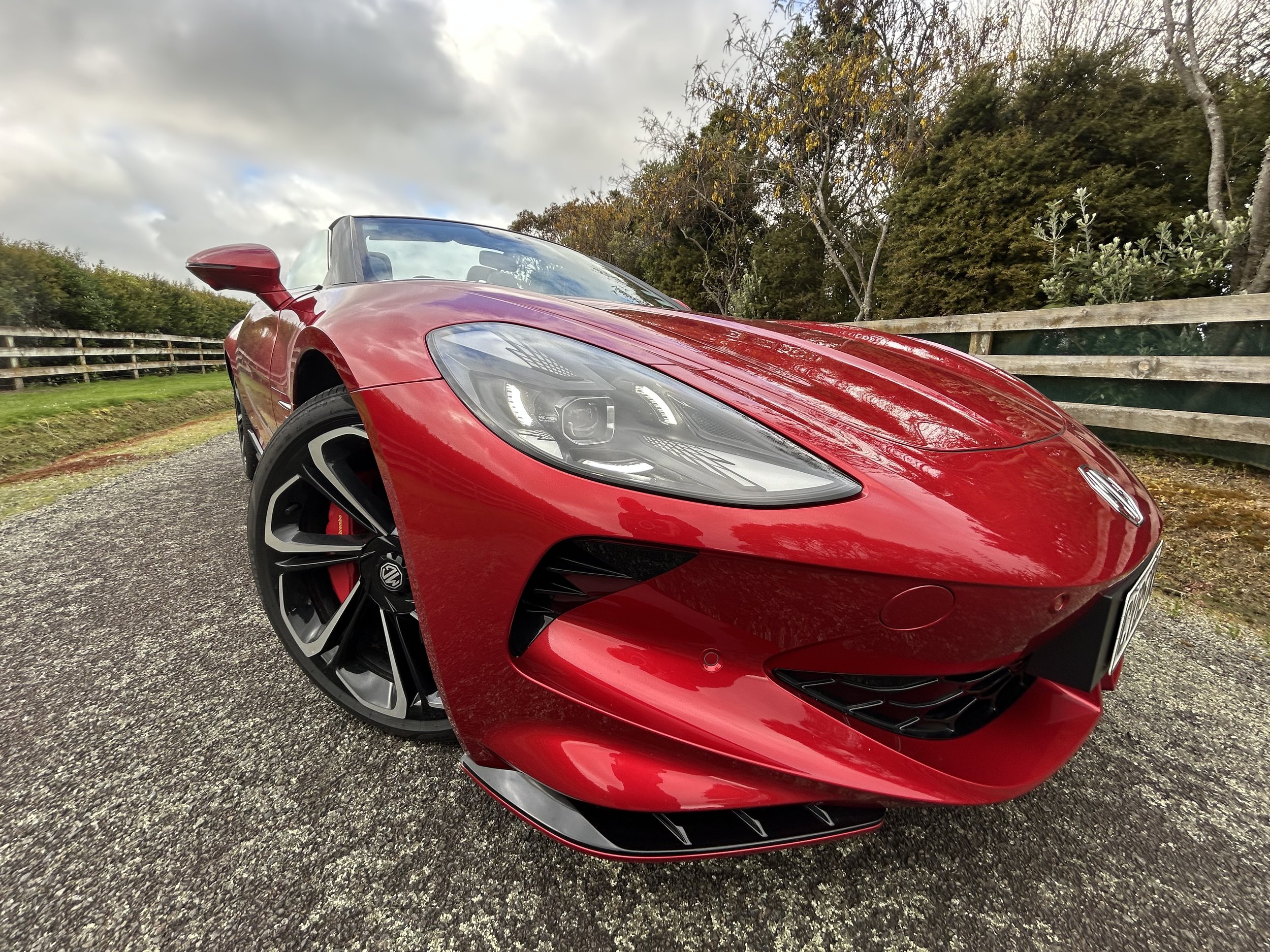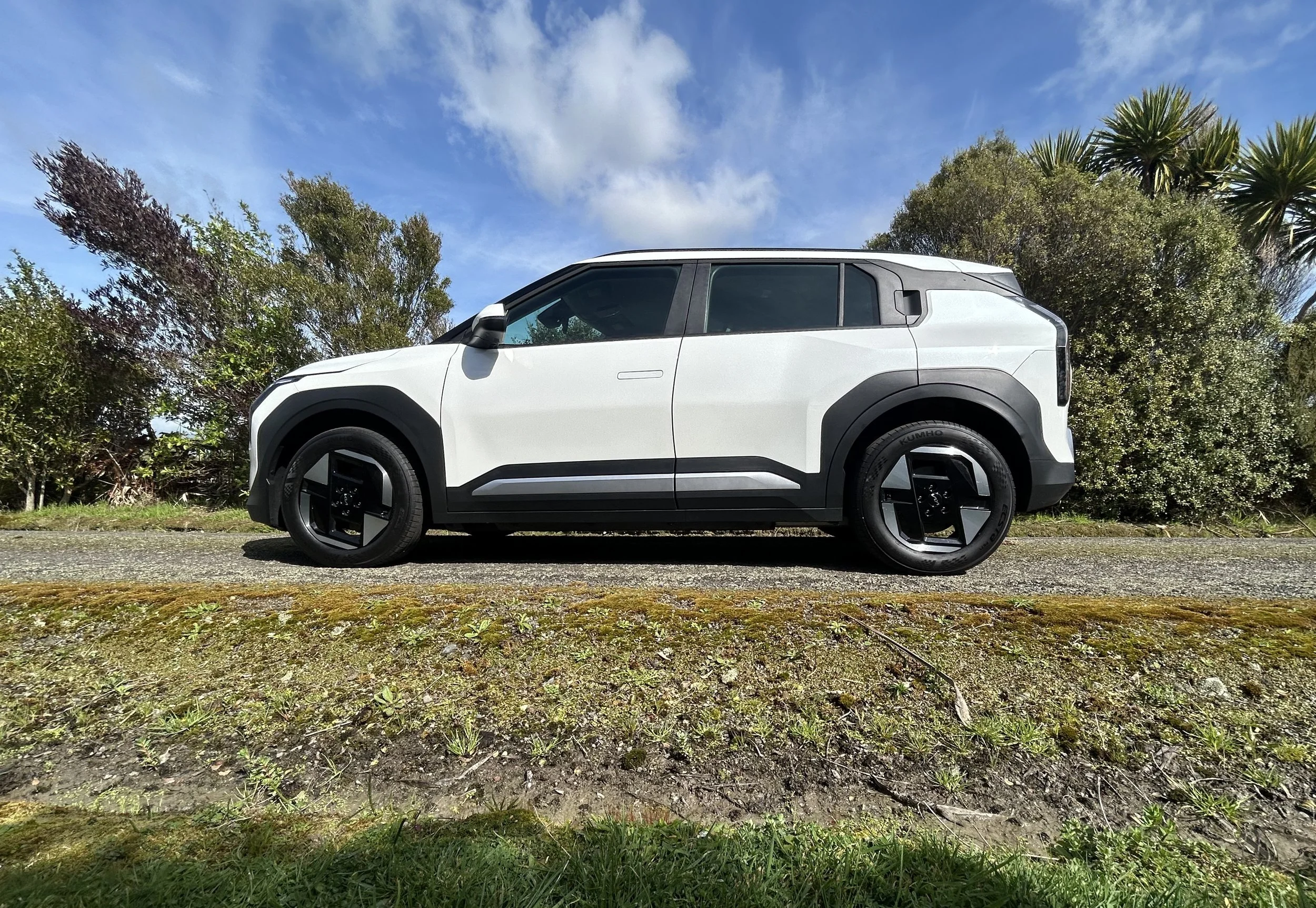Mazda CX-80 SP 3.3 roadtest review: Going the distance
/You know how six-cylinder petrol buy-in can hit you in the pocket? When given opportunity to roam, this one doesn’t.
How much: $74,990.
Powertrain: 3.3 litre inline petrol six with 48 volt assist, 209kW/450Nm, eight-speed automatic, all -wheel drive.
How big: 4990 long; 1890mm wide; 1710mm tall.
We like: Sweet on long haul; spacious interior; superb fit and finish; ‘entry’ trim perfectly adequate for the majority.
Not so much: No spare wheel; could do with more oddment space up front; transmission not as smooth as some.
HOW to achieve better economy from a generously sized six-cylinder petrol sports utility than arrives from the smaller, lighter, same seat count diesel model it surpasses?
Don’t ask me: I was only driving.
To put it another way …. I was only driving as I usually do. Sensibly, but with no particular thought about going for any thing other than what I hoped would be a real-world relevant economy.
And I did. Except it seemed otherworldly.
It truly did came as big a surprise to me as it might to you that the CX-80, the latest addition to what to some might seem by now to be confusing mix of models at the top of Mazda’s premium-flavoured SUV range, could achieve in its 3.3-litre format just 7.0 litres per 100 kilometres average economy at halfway point of a significant highway trip.
I was still astounded when it settled on 7.1 for the entire 490km run. It seemed too good to be true. But it wasn’t. Three days later, on a 110km drive also mainly at highway speed, it stuck with that very same determination.
Just to remind, this is a six-cylinder petrol. For sure, it now has 48 volt assistance involving. It’s a clever set up and, obviously, does much more than simply work to diminish the CO2 count.
But still. I’ve driven more than a few cars with those systems and, while they certainly are better off for having them, for the most part they have delivered what I’d contend would be modest fuel savings and just a few have really gone gangbusters. Even out of the latter, I cannot readily recall any thing else comparable that gave the kind of economy I saw from Mazda’s seven-seater bus.
This is a model that the maker claims will be doing well to achieve an overall - so from city as well as easy going, constant open road driving - 8.3-litres per 100km.
This is a car here to pick up duty from the CX-8, which ran a 2.2-litre diesel. A friend has one of those. It does a lot of driving on flat South Canterbury terrain. And generally returns 7.5L/100km in that endeavour.
What was working in my favour? I wasn’t pushing the car, stayed within posted speed limits - so hardly ever saw the rev counter get above 1600rpm - and a lot of the time I was driving solo. For the remaining period, there were no more than two extra occupants aboard.
Does this put the six in new light? for me, absolutely. When this engine arrived, initially as an alternate in the CX-60 from which the CX-80 derives and also as the sole choice for the largest-of-the-lot CX-90, it seemed a massive risk.
The decision to design and build an all-new petrol engine is a complicated and costly one; for a small manufacturer like Mazda to go this way, at time when one car company after another was announcing plan to phase out internal-combustion in preference for an all-electric future … well, you’d wonder what they were drinking in Hiroshima.
Beyond that, NZ then had Clean Car penalties that hit not only the distributor but also the buyer.
Mazda talked about it being highly efficient and right for the times … but, at same token, it was on the wrong side of the ledger in Government’s eyes. Ultimately, how it would fare seemed - at time - to entirely depend on what direction the emissions standard would take.
We all know the outcome; a change of Government and, though not all regulations have been dismantled, there’s far more leniency now. With that, an engine that might have gone wrong appears to have come right.
Still, you’ll be aware the brand has also delivered, in more versions of those models, a far more advanced powertrain which clearly set a standard for establishing much higher Green goodness.
The 2.5-litre petrol plug-in hybrid powertrain is a massively advanced powertrain. It is in two CX-80 derivatives, both costing more than the 3.3 on test.
Would the PHEV have taken me that far? Perhaps. Experience with this powertrain in a CX-60 suggests it might be a close run thing.
Meantime, as much as the dearer CX-80s also appeal on paper for having a few more comforts and stronger specifications, I really wonder already if the entry six-cylinder car won’t seem more adequate in its own right. It’s just as roomy, is very comfortable and seems to drive extremely well.
In addition to proving itself to be lean, the engine comes across as being suave, characterful in note and relaxingly muscular.
Switching the ‘MI-Drive’ selector to Sport mode opens up a rich seam of performance, but honestly it’s just as satisfying and more pleasantly relaxed in the normal mode. MI-Drive also has an off-road function, which again simply alters the engine map and gear change points; the car didn’t leave seal during this test.
In respect to Mazda’s transmission, there are still mixed feelings. It definitely enjoys the six’s torque, but still isn’t as crisp or clever as it ought to be, with a jerky motion when the car is cold, and some unnerving hesitation at intersections too.
The posh CXs are all based on the same ‘Large Product Group’ version of Mazda’s Skyactiv architecture. The ’80 uptakes the same platform, engines, suspension, dashboard and styling at the front and rear from the ’60. But they are not quite peas from a common pod.
The new one having a bigger body on a stretched wheelbase is quite a substantial change. The quirk about the seven-seater is that as much as it in most definitely the bigger car when undergoing kerbside scrutiny - 250mm longer, all of that extra length going into the wheelbase - and it feels no bigger in operation and also imparts a more settled ride quality.
Simply because of the longer wheelbase? To be fair, there’s more to it than this. The chassis differs in detail if not in overall design. The steering has been recalibrated, while at the rear the anti-roll bar has been removed entirely and the dampers have been stiffened up while the springs have been softened out. The suspension subframes have also been strengthened.
Regardless that this CX-80 has SP badging that is reserved for Mazda’s slightly - rather than outright - sporty cars, if back-to-backed I’d suggest the CX-80 is more relaxed than the CX-60, not just in cornering.
The larger car is tangibly more adept at soaking up bumps. I don’t have any issue with that. One criticism on the smaller model is that it’s just too rigid on less than smooth surfaces. That the CX-80 is more adept at gliding over imperfect surfaces seems no bad thing for a car so patently in the family way.
That’s not to call it a whale. Though it is too large to be called truly agile, if it matters, it can handle itself well in twisty bits, and has inherently good balance. Mazda’s steering has a sweet feel, the car stops nicely and it just feels well-engineered in those respects. More European than Japanese, almost.
But here, moreso than with the CX-60, there seems to be recognition that a family SUV like this arguably should be better at cosseting its occupants than at making the driver smile.
The refinement impressed. The engine contributes by being so smooth and sweetly melodic, but there’s more to it. Of all the new CX premium models, only the CX-90 is treated to double glazing, and it’s certainly very serene as result; you’d think it almost limo-like. Yet the CX-80 cabin, in turn, seems better isolated than the CX-60, with less road noise and decreased wind rustle around the common fitment door mirrors. The potential of a real sense of wellbeing on long journeys elevates as result.
Though there are differences in body design, the CX models are very Russian doll alike in general look. A colleague reckons that, if you’re looking at the CX-80 from dead ahead at the front, you’ll probably be thinking that you’ve made some sort of wrong turn in the showroom, and are considering the CX-60. Good point.
When at the wheel with eyes forward, the cars are much of a muchness. The same view over a bonnet that seems extraordinarily long by today’s design standard - because it has to accommodate the inline-six.
The interior of every CX on this platform is unquestionably one of the major high points. Excellent fit and finish has long tended to be a prevailing element of Mazda’s product; it knows perception of quality is a core factor to purchase consideration. Honda used to be known as Japan’s BMW … now I’d suggest the plaudit is more deserving of Mazda. Everything here is well-made; even in ‘base’ form, this car has leather seats with good quality hide chosen.
All CX-80s run 20 inch wheels with 235/50 rubber, have power tailgates and 12.3 inch touchscreens, reversing camera, front/rear parking sensors, heated front seats with electric adjustment, sat-nav, wireless Apple CarPlay/Android Auto with wireless device charging and have leather trim.
The SP 3.3 here and entry PHEV are identically-specified. The $6000 premium for the latter is purely to buy the powertrain.
The hybrid-pure Homura replaces the standard - and, to my ears, perfectly adequate - eight-speaker audio for a 12 speaker Bose unit. It also upgrades to a hands-free tailgate, adaptive LED headlights, brings heating to the mid-row seats (and the steering wheel) the personalisation system that sets up the driving position is fully automated, whereas on SP some adjustments (such as to steering wheel rake and reach) are manual . Plus there’s Nappa leather. Too good to pass up? Homura is very plush, but it’s poor sport to call the entry spec impoverished or in any way lightly tended to.
Instrumentation in all CX-80 types is all digital but is a bit limited in offering much in the way of personalisation, but you can choose between round dials - a classically handsome Mazda look I prefer - or a more expansive high-tech layout. The graphics for this and the nice-to-have head up display are crisp and clean.
For years I’ve wanted Mazda centre screens to be touch-reactive. Now they are and it’s good. Except, in this car, the screen is so far away even someone tall (as I am) has to lean awkwardly forward to make contact. So using Mazda’s click-wheel controller down on the centre console to enact functions seemed a better idea. It is certainly far more sensible and safe when you’re on the move, as you can move around menus and options without taking your eyes off the road a lot.
Mazda’s decision to keep proper physical controls for heating and air conditioning is solid and appreciated.
On receipt of the car, I set up personal preferences to establish seat and steering wheel position, climate settings, and infotainment preferences.
This works with the facial recognition system whose alternate job is as a driver drowsiness camera. It’s either perhaps a little over-zealous in the latter function or it caught me on bad morning; within 20 minutes of driving on one day the car was urging me to take a break.
Perhaps practicality could be a little better, at least around the driver’s zone. Storage space in the front of the cabin is adequate, but no more than that. Two cup holders, a shallow storage bin under the front armrests and some quite small door bins is the sum total.
The wireless phone charger is almost a bit too large; unless it was positioned just-so, my iPhone slid off the conductive zone; every time that happened a message displayed on the centre screen. I saw it often. In respect to that subject, the CX-80 has wireless Apple CarPlay and Android Auto as standard, and it works very well.
Why a CX-90 now this model has landed? Good question. Save for a couple of millimetres’ headroom and shoulder room in the third row, the CX-90 is no roomier. They even share the same floormats. Mazda says the cars are there to complement each other.
When the mid row seat is set to its default, and even after the front chairs are well back, there’s enough space in the second row to satisfy even taller passengers. But that’s at cost to the knee room in the rearmost seats.
Assuming everyone is agreeable, there’s latitude for all-round compromise, as the second row slides fore and aft. Front seat occupants will have to also get in on the game, but bring the mid-row forward and that’ll in turn allow more room for rear seat riders, who gain entry and egress by using a quick ‘fold-and-slide’ button. Doing this lends best opportunity for a happy full-house, even though it does detract from the sensation of luxuriousness.
CX-80 has ISOFIX anchor points in the outer two rear seats, but none for the front passenger seat nor the third-row seats, though these have top tethers. There are vents and USB-C ports, plus cup holders in the very back too.
Boot space is good. With three rows up the figure is a decent 258 litres, expanding to a claimed 588 litres with the rear row down, this just asks nothing more than simply tugging a strap. Fold all the back seats and there’s 1987 litres if you load the CX-80 to the roof. Under the boot floor is a spot for a cargo cover and your tyre repair kit. No spare here (or anywhere in the world).
Towing capacity for both engines here is up to 2500kg for a braked trailer; you sense the engine could cope with more, but perhaps the car as a whole shouldn’t. Unbraked capacity is 750kg.
The ANCAP rating is the same as for its sister ships on this underpinning, a maximum five-star score in 2022, but scoring was done in 2024, by which time the schedule had raised to a tougher level. Like those, it has an abundance of tech including autonomous emergency braking with pedestrian, cyclist and junction detection, lane keeping assistance, blind-spot monitoring, front and rear cross-traffic alert, a surround-view camera system, front and rear parking sensors, a speed sign recognition system, the driver monitoring camera and eight airbags: Dual front, front side, front centre, driver’s knee, and curtains.
When Mazda launched these powertrains, the hybrid seemed a better all-round choice, because it conformed more closely to the regulations of that time. Rules that have now gone or been watered down. Have the tables been turned?
I’ve always held that the powertrain decision should reflect down to user intent. If you mainly plan on localised, short duration driving, the PHEV has to have potential to shine more brightly because it delivers real opportunity to drive on the cheapest fuel out there, electricity, for 60-65 kilometres if the going is easy, no less than 40 if it is not. The 3.3-litre flits in an out of electric assist on the open road, lends a bit more in urban driving, but is very rarely reliant purely on battery oomph.
Operating optimally, the PHEV offers a claimed combined fuel consumption of 2.7-litres per 100km. That’s better than you used to think decent from the now retired Mazda2 city car.
The critical trick, though, is to keep it in that electric-petrol sweet spot; achieving regular replenishment is a slight challenge, because it’s an AC set-up. The restrictions of its replenishment protocols are a hindrance, in my view.
When electric doesn’t involve, the 2.5-litre has to work hard - the CX-80 PHEV is heavier than the 3.3 - and real-world fuel economy suggests consumption of around 7L/100km after draining the battery. The PHEV has a 70 litre tank. The 3.3’s holds four additional litres.
I returned the test car with 758 kilometres clocked, and relating 43kms’ range remaining; likely as not, it really had around 100kms’ range before it might have coughed. Those systems always err on the side of absolute caution.
As much as the CX-80 seems set to shine for urban/school run use; though large it never feels over-sized and isn’t challenging to place on busy streets, this experience enforced that road tripping really brings the best from it.
The six’s ability to sip is a truly nice ‘to-have’ - if you cruise, it becomes genuinely fuel frugal, feels mighty and you have none of the PHEV’s downtime hassles. Long distance driving also shows the car itself to be a comfortable and confident-feeling choice.
The price positioning is not exactly for budget buyers, yet the saving over the PHEV in the cheaper of its two formats will buy more than a few refills. It’s interesting the Homura has from this week become subject to special pricing that brings it down from $89,490 to $83,490; a $9000 gap between the two PHEVs now comes down to $3000.
Still, as things stand, any distributor-shared projections that the six-cylinder petrol will be the favourite this year would seem, to me, to be bang on.

